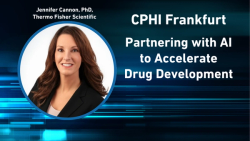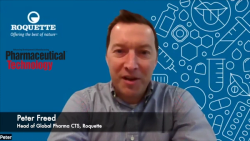
OR WAIT null SECS
- About Us
- Advertise
- Contact Us
- Editorial Info
- Editorial Advisory Board
- Do Not Sell My Personal Information
- Privacy Policy
- Terms and Conditions
© 2025 MJH Life Sciences™ , Pharmaceutical Technology - Pharma News and Development Insights. All rights reserved.
Merck/PITT Collaboration Demonstrates Rapid Method for Evaluation of Residual Palladium
A simple, rapid analytical method for the determination of palladium in pharmaceutical production samples will speed up development and optimization of reactions involving palladium catalysts.
Increasingly, pharmaceutical manufacturers are relying on transition-metal catalysts to mediate transformations that produce pharmaceutical intermediates with high selectivities and yields. Although the use of catalysts often reduces the number of synthetic steps and can also address concerns about byproduct and waste management, they do present their own challenges. Removal of any residual metal species is often the primary concern. Thus, access to rapid analytical techniques for the determination of residual metal content is needed.
Of the transition metals used for catalysis in the pharmaceutical industry today, palladium is perhaps the most common. The growing use of palladium catalysts for various carbon–carbon and other coupling reactions, in particular, has created a need for a practical method for the determination of residual palladium levels in reaction solutions. Current techniques, such as inductively coupled plasma-optical emission spectroscopy (ICP-MS) and inductively coupled plasma-mass spectrometry (ICP-MS), are not ideal, according to recent research reported in the journal Organic Process Research and Development (1).
Christopher J. Welch and colleagues at Merck Research Laboratories, in conjunction with Kazunori Koide from the Department of Chemistry at the University of Pittsburgh (PITT), reported that ICP-MS and ICP-OES are limited techniques because the instruments required for these analyses are very expensive, and therefore, samples often must be sent out to contract laboratories. Furthermore, sample preparation is complex, and thus these analyses must be carried out by trained people and cannot be completed where the sample was generated. Furthermore, the turn-around time for samples is often quite long, eliminating the possibility for rapid decision-making, which is a real issue when conducting screening studies for the selection of an appropriate palladium sequestration agent for a given process (1).
Complex chemistry to overcome
Although many in the pharmaceutical industry would value a rapid analytical method for residual palladium in reaction mixtures that could be used in the pilot-plant environment, no method has yet been developed due to the complex chemistry challenges that must be overcome (1). Professor Koide and his co-workers previously reported a method for the quantification of palladium based on the palladium-catalyzed Tsuji−Trost deallylation of allyl Pittsburgh Green ether (APE), which produces a highly fluorescent product (2).
This reaction, according to Welch, is a really nice system that is sensitive to palladium-catalyzed deallylation (as most allyl phenyl ethers are) and produces a very nice, strong fluorescent signal upon deallylation and was developed by the Koide group following examination of a large number of possibilities. Koide explains that the reaction is accelerated by phosphate ions in the pH 7 buffer, and the structure and concentration of the phosphine ligand were optimized specifically for these reaction conditions. He also notes that the vast majority of APIs are not green fluorescent, and therefore users do not need to be concerned about potential background signals. When Merck scientists used the new reagent for pharmaceutical process samples, however, they found that the results were not in good agreement with those obtained using ICP–MS (1).
This result should not, they reported, be surprising because pharmaceutical process samples often contain palladium species in different oxidation states as well as many different organic compounds that can strongly complex with the palladium and either reduce its availability for deallylation or enhance its reactivity (1). In addition, some intermediates in the reaction mixture may act to quench fluorescence, thus interfering with the measurement of the fluorescence of the compounds produced in the assay (1).
Easy pretreatments for improved results
Since the original development of the deallylation method, Koide had reported that certain pretreatment methods improved the accuracy of the method in simple palladium solutions (3). Specifically, the Koide group found that addition of sodium borohydride (NaBH4) is effective for converting the various palladium species present in a reaction to Pd0, which is the desired form for the deallylation reaction. In addition, digestion of a reaction mixture with a strong acid was found to be effective for degrading the organic compounds that can interfere with the fluorescence measurement (3).
In a collaborative effort, the PITT and Merck researchers examined both pretreatment methods. They reported in their recent paper that when (NaBH4) was used as a pretreatment, the results using the deallylation method were of those obtained using ICP-MS. When samples were incubated first with aqua regia and then treated with (NaBH4), however, the results with the rapid deallylation method rose to 80–110% of those obtained using ICP–MS (3).
The researchers acknowledged that the handling of aqua regia can be an issue, and that its use should be determined based on the need for improved accuracy. They also recognized that the results with the new method, while not ideal, do provide reasonably accurate values for actual pharmaceutical process solutions, and thus the method can be suitable for the determination of residual palladium during development and optimization of pharmaceutical processes (1).
“This approach is attractive because it pretty much works for all reactions where residual palladium contamination might be a concern,” Welch says. “In addition, because the analysis is carried out after completion of the reaction, and often after the workup, and the testing is performed on only a small aliquot that is representative of the product, the process chemist finds out rapidly if the batch is ‘clean’ or of additional workup/cleaning steps may be required,” he observes.
As simple as possible
Importantly, Welch and his colleagues found that the rapid fluorescent analysis method makes it possible to determine palladium concentrations in the same laboratory using a fluorescent plate reader with read times of less than 1 minute per 96-well plate (or < 1 second per sample) (1). Furthermore, by developing a premixed solution that can be stored at room temperature and for months in the freezer, the researchers further simplified the process (1).
Visual detection of the Pittsburgh Green dye produced in the reaction was possible in many cases (1). Analysis with a hand-held UV instrument was also appropriate in some applications. However, the most accurate results were obtained using quantitative fluorescence measurement, and high throughput analysis was possible using typical fluorescence plate readers (1). The researchers also reported that the development of self-performing versions of the method, such as one based on test strips, might be possible at some point in the future for very rapid readout of palladium concentrations (1).
“Our goal with this technique is to funnel down samples to help synthetic organic chemists determine which palladium-scavenging methods are working better than others,” says Koide. He is currently working on understanding the parameters that influence the rate-determining step. “I am aware of at least three companies that have evaluated our method before this paper was published. While I do not know what they found out, I can imagine that the success rates were as modest as Merck’s prior to this work. I am hoping that these users will appreciate the significance of sample preparation described in this paper.”
References
- X. Bu et al., Org. Process Res. Dev. 17 (1) 108−113 (2013).
- F. L. Song et al., J. Am. Chem. Soc. 129 (41) 12354−12355 (2007).
- F. L. Song et al., Chem.Eur. J. 16 (45) 13500−13508 (2010).



